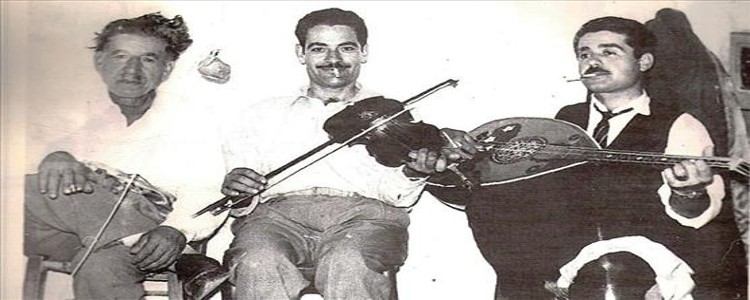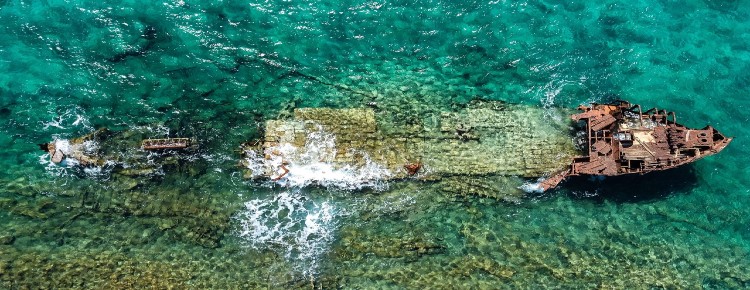THE CASTLE OF GRAMVOUSA
The castle of Gramvousa as we know it today was built in the 16th century (1579-1584) by the Venetians out of the fear of Ottoman expansionism. It is considered an architectural masterpiece of its kind and became an impenetrable fortress.
The strategic position of the castle allowed its Venetian rulers to control the strait between Western Crete and Peloponnese.
In spite of this, the Venetians failed to prevent the occupation of Crete by the Ottomans. In 1645, after a brief siege, the Ottomans occupied Chania and by 1669 they had conquered the whole of Crete. The Treaty of Morozini allowed the Venetians to keep control of the castle of Gramvousa (as well as the islets of Souda and Spinalonga) with the hope that one day they would regain control of Crete. Gramvousa was used as base by the Venetians who were trying in vain to regain Crete, but also by the Cretans who were resisting the Ottoman rule. In the summer of 1692, the castle was handed over to the Ottomans by the Venetian commander of Calabria, Luca Della Rocca. In return, the Ottomans granted him some kind of authority in Istanbul and started ironically calling him “Captain Gramvousa”.
They then fortified the castle with 66 long-range cannons, they stationed strong troops and made it impenetrable. For many years after that, all revolutionary activities of the Cretans were limited to a minimum. During the Greek revolution against the Ottomans, Gramvousa played a very important and decisive role. After several attempts, the castle was finally conquered by the Cretan rebels in 1825, when some of them managed to get inside dressed as Ottomans.
Gramvousa was the first part of Crete that was liberated from Ottoman rule. It served as a shelter for more than 3,000 people and became the starting point for all rebel activities. The rebel groups called “Kalisperides” would start from Gramvousa and terrorise the Ottomans who would use their armed forces called Zourides to set up ambushes against the Christians.
However, due to the difficult living conditions, the people of Gramvousa started engaging in piracy and attacking all passing boats between Gramvousa and Antikithira, something that roused the European public opinion against pirates. After signing an agreement with the Greek government, the British and French navies occupied the castle in 1828 and drove out the pirates. The Protocol of London left Crete in Ottoman hands and in 1831 the Russian Guard of Gramvousa gave the castle back to the Ottomans as an ultimate sign of international justice.
NIKOLIS TSEGAS
The legentary poet of Gramvousa

One of the most popular traditional Cretan songs written by Kostas Mountakis (You can listen to it on Youtube) is dedicated to the memory of Nikolis Tsengas, who was born in Kissamos in 1900. He was a simple person, an illiterate poor fisherman who loved Gramvousa and expressed his affection through his songs. He was its greatest poet. A talented, self-taught folk composer who became a legend, just like Gramvousa itself. He excelled as a composer and his mantinades (short poems from Crete sung in the rhythm of accompanying music) remain popular. He addressed everyday problems with a philosophical attitude, mourned for his misery, mused over curious things in the world and always enjoyed life. He could not play any instruments and he had not studied music or been to arts school. But he had a unique talent: he could compose music only by whistling.
The life of Gramvousa’s greatest admirer came to a tragic end. He drowned in its blue waters on a dreadful day for Crete. Nikolis Tsengas was a fisherman and on 7th December 1966 his boat “Kyriakos” got caught in a raging storm near Gramvousa. At the same moment, the ferry “Irakleio” was sinking near Falkonera in Central Aegean, causing the deaths of 250 Cretans.
Nikolis Tsegas died in the place that he loved more than anywhere or anything in the world. His wife Maria, who was with him on the boat, could not save him. He became a legend, just like the island he loved so much.
Today, visitors to Gramvousa can’t help wondering how one person could tie his name to a whole island. Yet, Tsegas became part of history and remained in the hearts of all those who knew him but also of the next generations. He was a genuine person with a true Cretan soul!
Every year on the last Saturday of July, our company organises an excursion together with the Association for the Promotion of Kissamos called “Grabousa”, as part of the “Grabousia” festivities. Our ships bring participants to Gramvousa and Balos (Tigani). There, in the castle of Gramvousa, a memorial ceremony takes place with a speech and religious chanting in the honour of all those who died during the revolution. The same is repeated in Balos, where the Association placed a memorial plaque in 1997. On their way from Gramvousa to Balos, passengers throw wreaths where Nikolis Tsegas drowned and accompanied by violinists and lute players, they sing with tears in their eyes the mantinada “Stis Grabousas t’ akrotiri” (At the Cape of Gramvousa). That way they once again say goodbye to the legendary poet of Gramvousa...
Our dear Nikolis Tsegas, you and your mantinades have stayed in our heart and we always sing them wherever we are. You became a legend together with Gramvousa!
GRAMVOUSA’S SHIPWRECK
Next to the little port of Gramvousa island and close to the small church of St Apostoli, you can see the 35-meter- long semi-sunken motor ship "DIMITRIOS P”

A rusty shipwreck, which has become a landmark of the area, is an interesting destination for spear-fishermen and also an ideal subject for those who love photographing shipwrecks.
On 30th December 1967, the ship left Chalkida (a town in Central Greece) with a load of 440 tons of cement heading towards Northern Africa. Due to the adverse weather conditions, the ship had to anchor in Diakofti Bay in Kythira. On 6th January 1968 it departed for its destination, but it again encountered bad weather and was forced to change course towards the northwest coast of Crete. As the storm continued, the ship was forced to anchor with both its anchors on the south side of Imeri Gramvousa, 200 metres from the coast.
At 13:15 on 8th January 1968, as the weather conditions were deteriorating, the chain of the right anchor was cut. The captain tried to hold the ship straight with the help of the engine, but he did not succeed and the ship became stranded on its left side while the engine room flooded with water. Then the captain ordered his crew to abandon the ship and everyone disembarked safely in Imeri Gramvousa where they stayed until 10th January due to the continuing bad weather. Finally, one of the Greek Navy’s destroyer ship collected the crew members and transferred them safely in Souda.
The wreck of “DIMITRIOS P” remains there up to this day and has now become an integral part of Gramvousa, together with other shipwrecks that have lain on the seabed for centuries.